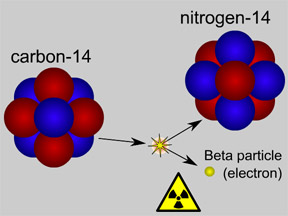Alga (singular of algae) is an example of an autotroph because it is capable of photosynthesis.
Click on image for full size
Image courtesy of Corel Photography
Autotrophs
Autotrophs are organisms that produce organic compounds from an inorganic source of carbon (carbon dioxide) given a source of energy. If the source of energy is the reactions of inorganic chemical compounds, then the autotroph is known as a chemoautotroph. An example of a chemoautotroph is the bacteria that live in
deep sea vents. More commonly, autotrophs use light in the process of
photosynthesis. Photosynthesis is the name of the process which photoautotrophs use to
convert water,
carbon dioxide, and solar energy into sugars and oxygen. Examples of photoautotrophs are plants and photosynthetic algae.
Autotrophs are the producers of the food chain. The word autotroph comes from the Greek autos=self and trophe=nutrition.
You might also be interested in:

Photosynthesis is the name of the process by which autotrophs (self-feeders) convert water, carbon dioxide, and solar energy into sugars and oxygen. It is a complex chemical process by which plants and
...more
Carbon dioxide is a colorless and non-flammable gas at normal temperature and pressure. Although much less abundant than nitrogen and oxygen in Earth's atmosphere, carbon dioxide is an important constituent
...more
Respiration is the name of the general process by which living organisms convert sugars and oxygen into biochemical energy. The process occurs in all organisms, including animals, plants, fungi, and bacteria
...more
Carbon-14 dating (also called "radiocarbon dating") is used to determine the age of materials that contain carbon that was originally in living things. It is often used in archeology and some
...more
Jupiter's atmospheric environment is one of strong gravity, high pressure, strong winds, from 225 miles per hour to 1000 miles per hour, and cold temperatures of -270 degrees to +32 degrees (freezing temperature).
...more
In July, 1996, it was announced that Dr. David McKay, along with a team of scientists at Johnson Space Center (a division of NASA), had discovered possible fossils of bacteria in an ancient rock from Mars.
...more
Saturn's atmospheric environment is one of strong gravity, high pressure, strong winds, from 225 miles per hour to 1000 miles per hour, and cold temperatures of -270 degrees to +80 degrees. With winds
...more















